READY TO GET STARTED?
REQUEST A FREE ESTIMATE
Fill out the form below or call (888) 466-7849 for a free, no-obligation estimate.
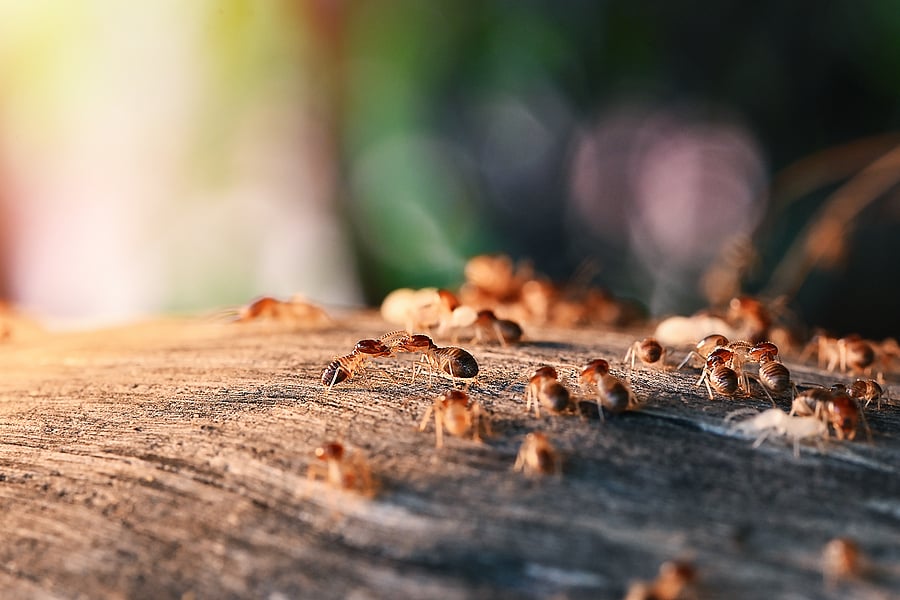
Spring and early summer mark the start of termite swarming season. Swarming termites, also known as alates, are classified as nuisance pests because although they can be bothersome to have around, they cannot bite, sting, or even chew wood. They do, however, signify the presence of an established termite colony nearby which can be problematic for you and your home.
Termites are silent destroyers, often causing significant damage and destruction to your home for long periods of time while going undetected. Learning the signs of termites, including the presence of swarms, is a critical first step in termite prevention.
When dealing with termite swarms, several questions are posed: When is swarming season? Where should I look for swarms? Can these swarms cause damage? Why are they swarming? How can I prevent them?
This question depends on what type of termite you are dealing with. Subterranean termites begin their swarming season in the spring, usually during daylight hours. Drywood termites, on the other hand, don’t swarm until late summer and early fall. Dampwood termites tend to swarm during the summer months. The weather also plays a factor into when termites will swarm. Each species has its own set of conditions that are ideal for swarming but most of them will start the day after a rainstorm when the weather is still overcast and there is little to no wind.
While termite swarms can be found both indoors and outdoors, they cannot survive indoors because of the lack of soil in which to colonize. Swarming termites can be found anywhere termites colonize. If they do make their way indoors, they can often be found near windows and light fixtures as they are attracted to the light.
Termite swarms themselves usually do not cause damage. Swarming termites cannot bite, sting, or chew. As termites get ready to swarm, they make a tube which they use to launch. When conditions are ideal, they use the tube to launch themselves. After a brief flight of only a few seconds, the termites land and break their wings away from their bodies and pair with a mate. Those pairs that survive then create a chamber underground that they use to breed and the new colony is formed. Swarm launches are usually spread out over a few days with a large release on the first day and smaller launches on subsequent days. Termite swarms can indicate the presence of an existing colony nearby so while the swarmers themselves may not cause damage, the nearby colony can.
The primary purpose of termite swarms is reproduction and expansion of the colony. When the original termite colony reaches capacity and needs to expand then the swarming process begins, usually occurring once per year. The number of termites in each swarm varies depending on which type of termite species is swarming and the size of the colony.
In order to prevent termite swarms, one must prevent termite colonies from establishing nearby. Prevent termites by:
Because a termite swarm indicates a nearby colony, homeowners should take precaution when one is spotted nearby. If you suspect you have a termite infestation, contact a professional pest control company who can inspect your property and set up a termite control plan.
7 Snakes You May Encounter This Summer
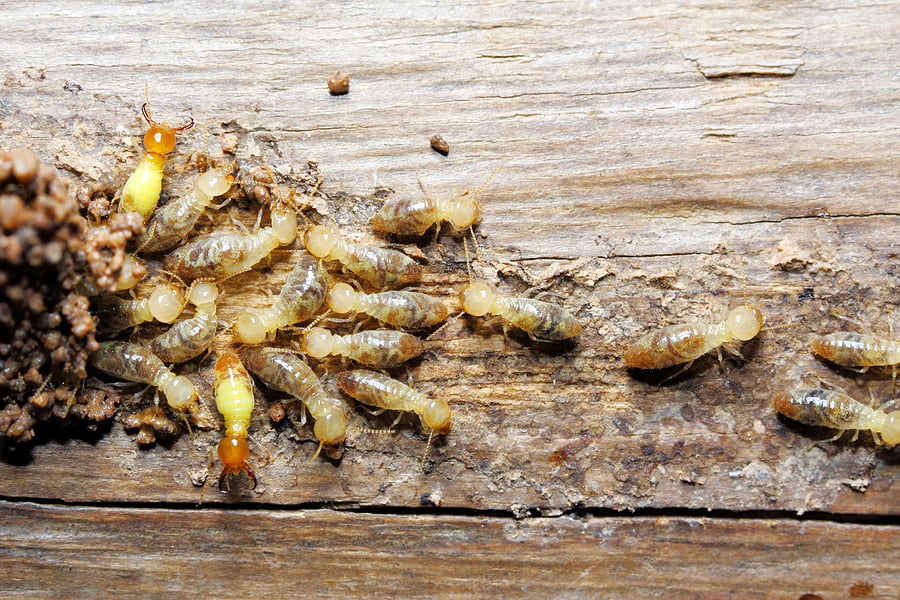
Termites cause billions of dollars in damage to homes each year. This irreparable damage can affect both the structure and the integrity of your home. It is projected that homeowners spend upwards of $2 billion on termite treatments each year. Termites eat wood from the inside out, allowing them to go undetected for long periods of time and causing significant damage before you even realize it. Oftentimes homeowners aren’t aware of the presence of termites until they discover this damage.
The most common type of termite in the United States is the subterranean termite, although drywood termites, dampwood termites and Formosan termites can also be found here. Some of the most common signs of termites in your home include termite swarms; mud tubes on or around foundations; piles of discarded wings; drooping or discolored drywall; paint that is peeling; wood that makes a hollow sound when you tap on it; squeaking floorboards; doors and windows that stick; damaged or crumbling wood; loose tile; buckling floors; and even small holes in your drywall.
There are three main methods of termite treatment and the effectiveness of each depends on the type of termite you are dealing with and the severity of the infestation. Here is a breakdown of all three, along with some termite prevention tips to help protect your home from termite damage.
Soil treatments are applied to the soil that surrounds your home to create a barrier. The first step is to dig a trench around your foundation. This soil is then treated with a termiticide and the trench is filled back in. By doing this, termites are killed as they pass through the chemicals on their way back to their nests.
Wood treatments are used to both kill existing termite colonies and also prevent future ones from starting. There are different types of wood treatments all used with varying effectiveness depending on the type of termite and the severity of the infestation. Surface sprays are treatments that are applied to the surface of wood. Injected sprays and foams are applied to the inside of wood. Borate treated wood is wood that is pretreated with a borate solution. Gas fumigation entails using fumigants that permeate throughout your entire home which disrupts the metabolism of the termites. Surface sprays and borate treated wood are usually used during construction or renovation of homes. Injections, foams, and fumigants are used after a home is built.
Bait systems are most effective at destroying termite colonies. A termite control professional will come out and install the bait stations around the outside perimeter of your home. These stations are then monitored on a regularly scheduled basis. Bait stations help ensure your home is protected from both a current infestation and a future one. The bait stations contain chemicals that termites eat and then take back to their colonies which allows it to be spread to others. This type of termite treatment is most effective with larger termite colonies.
How do you know which type of treatment is best for you? That all depends on the type of termite you are dealing with. Subterranean termites typically nest underground and enter homes where the wood structure makes direct contact with the soil. They will often squeeze through cracks in the foundation or around utility pipes through mud tubes. The best treatment for these termites is either a soil treatment or a bait station.
Drywood termites don’t require direct soil contact for survival. These termites will colonize anywhere they can find a preferred source of wood. They also don’t need as much moisture to survive like other termite species do. Drywood termites are often found in attics, dead or dying trees and shrubs, utility poles, fencing, and furniture. These termites are most effectively treated with gas fumigation or targeted termiticide.
Dampwood termites are much larger in size than their subterranean counterparts. They also have large pincers that they use to fight off predators. They typically colonize damp or decaying wood with higher moisture content like that found in logs and stumps. These termites don’t usually make their nests in the soil or build mud tubes. They are also not usually as destructive as other termite species are. The best treatment for these termites is moisture removal and termiticide application.
The best way to get a head start on termite control at home is through prevention. Most homeowners policies do not cover termite damage so keeping them away is critical to protect both your home and your wallet. You can prevent termites by:
If you suspect you have a problem with termites or you just want to get ahead with a prevention plan, contact your local pest control company who can provide you with a free analysis and set you up with a successful treatment and prevention plan going forward.
The Importance of Mosquito Treatments
How to Prepare for Snake Season
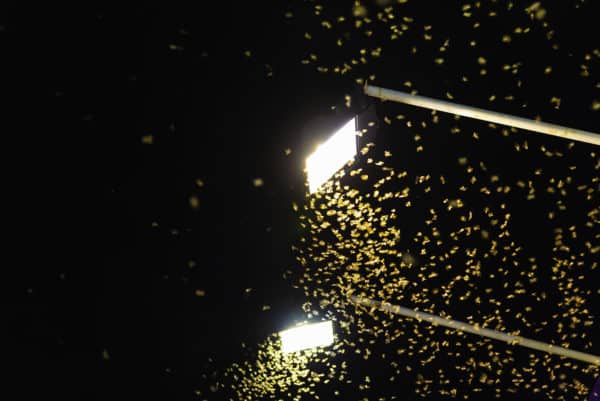
Swarming termites are also known as alates. Swarming termites are usually a seasonal nuisance as they cannot bite, sting, or even chew wood. While they don’t usually cause damage themselves, they do, however, indicate that there is an established colony nearby. These seasoned termites are capable of causing extensive damage to your home.
When dealing with swarming termites there are three important questions to ask: When do they swarm? Where do they swarm? Why do they swarm?
Termite swarming season varies by species. Subterranean termites swarm during daylight hours in the spring. Drywood termites swarm in late summer to early fall. Dampwood termites swarm in the summer. Most species of termites have specific conditions they wait for in order to start swarming. They usually wait for the day after a rainstorm, overcast weather, and wind speeds less than 6 mph.
Swarming termites are found anywhere termites colonize. Termites can swarm indoors or outdoors, although they cannot survive indoors as there is no soil for them to create their colonies in. Swarming termites are attracted to light and are often found near windows and light fixtures. As termites get ready to swarm, they prepare a swarm tube which they use to launch. When the conditions are right, they use the tube to swarm. After a brief flight which lasts for only a few seconds, they land and break their wings away from their bodies. They then pair with a mate. Those pairs that survive then create a chamber underground that they use to breed and the new colony is formed. Swarm launches are usually spread out over a few days with a large release on the first day and smaller launches on subsequent days.
The sole purpose of termite swarms is reproduction and expansion of the colony. The original termite colony reaches capacity and needs to expand. This is usually done once per year, hence termite swarming season. Both males and females swarm at this time. The number of termites that swarms each season varies depending on the size of the colony and the species of the termite.
Because a termite swarm indicates a nearby colony, homeowners should take precaution when one is spotted nearby. A thorough inspection of your home and property should be performed looking for signs of termites. This is also a good time to set up your annual termite inspection if you haven’t already. If you suspect you have a termite infestation, contact a professional pest control company who can inspect your property and set up a termite control plan.
7 Things You Didn’t Know About Cockroaches
How Much Does A Mosquito Treatment Cost?
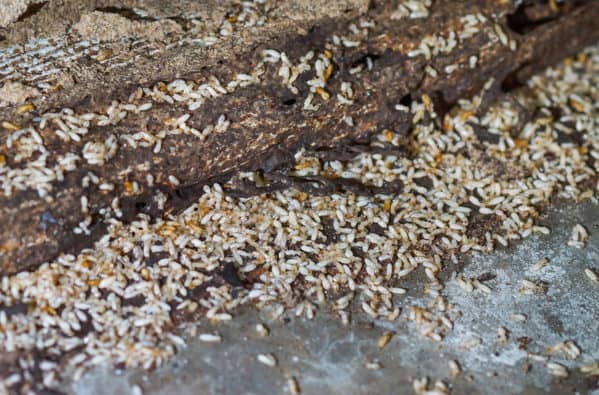
Termite infestations can cause significant (and expensive) structural damage to your home and property. What makes termites even worse is they usually cause significant damage for a long period of time without being detected.
Spring is an especially critical time for identifying and dealing with termites because that is the time of year when termites swarm to establish new colonies. These swarmers are winged adult termites that mature and fly away from their colonies to continue reproducing. Termite swarming season begins at different times for different species but all of them typically begin when the weather warms up following a significant rain event. For most species like subterranean termites, this falls in early spring. Age is also a factor in determining when termite colonies will swarm. While there is no specific age for a colony to swarm, most colonies aren’t mature enough until they are at least 3 years old.
Swarming termites often gather in areas with low-wind and diffuse light. Swarms can occur over a period of several days. Termite swarms are often confused with flying ant swarms. There are 3 major differences between termites and flying ants: antenna, wings, and body segments. Termites have straight antennae with a slight drooping look while flying ants have antenna that are bent at a 90 degree angle as they come out the side of their heads. Termite wings are basically equal in length while flying ants have front wings that are noticeably longer than their hind wings. Finally, termites have 2 body segments with straight abdomen while flying ants have 3 distinct body segments that narrow at the waist.
Odds are if you notice a termite swarm in or around your property the initial nesting site is not too far away. Termite swarms are a good indication that a termite infestation is imminent. Swarming termites also discard their wings after their new colony is established. Finding piles of discarded wings is also another sign that a new active termite colony is close by.
It is important to periodically check for signs of termites in your home to try and catch an infestation before the damage is significant (and costly).
If you notice a termite swarm this spring or any of these other signs of termites, it’s not too late to act but action should be taken sooner rather than later. With the help of a professional pest control company, you can take quick action for termite treatment while avoiding the costly headache of structural damage to your home. Whether you’ve dealt with termites in the past or just want to avoid dealing with them in the future, investing in termite protection now is always a good idea.
Where Are These Stinkbugs Coming From?
10 Common Myths About Pest Control
Keeping Wildlife Out This Spring
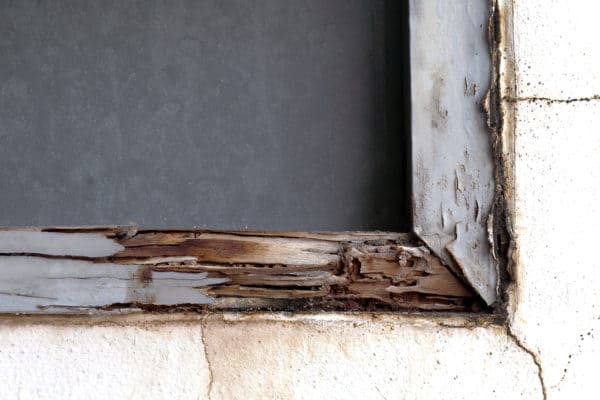
When it comes to protecting your home from termites, your best bet is not to rely on just luck – termite prevention is critical to minimizing or completely avoiding the costly destruction termites can cause to your home. In fact, some cultures consider termites in the home bad luck. These cultures see termites as an omen of death in the near future for the homeowner; the only way to escape this ill fate is to eliminate the termite colony or abandon the infested home.
If prevention fails, early detection is the next best thing. Termites can cause significant damage to your home while remaining undetected for years. For this reason, annual termite inspections can help identify these pests early, saving you from costly long-term damages.
Prevention is key. Here are a few tips for termite prevention in your home:
Termites will look for any way possible into your home in search of food. Try to reduce any soil to wood contact around your home by getting rid of any lumber, mulch, plants, or wood from your foundation. Try to also keep at least a 4 inch barrier between any mulch used in your landscaping and the side of your home. If possible, use pine straw instead of mulch as it is less appetizing for termites. Keep shrubbery trimmed back at least 12 inches from the walls of your home and get rid of any fallen branches, dead wood, or old tree stumps on your property.
Make sure your storm drains are directed away from the foundations and that they drain at least a few feet from foundations. Check for and repair any leaky faucets, pipes, or appliances and eliminate any other sources of excess moisture in your home. Keep sprinkler heads pointed away from foundations. If you have a crawlspace, consider crawlspace enclosure to not only help eliminate moisture under your home, but prevent mold, mildew, wood rot, and pests from getting into your home.
Most subterranean termites swarm during spring while drywood termites usually swarm in late summer and early fall. Be mindful of termite swarming season and make sure your outdoor lights are turned off at night. If possible, try to relocate any exterior lights to recessed areas away from doors and windows as swarmers are attracted to light.
Keep an eye out for signs of termites in your home. Discarded wings and evidence of frass are sure signs you have termite tenants. Other signs include blistering sheetrock, mud tunnels, cracks in your foundations, and a hollow sound when tapping on wood. Make sure the exterior of your home is well maintained to prevent these by inspecting and repairing wood siding and window frames.
Termites can be difficult to detect for long periods of time and even more difficult to get rid of once they are established. If you suspect you have a termite problem or if you want to get a step ahead of the prevention game, contact a professional pest control company who can set you up with annual termite inspections and, if necessary, a termite control plan.
Energy Saving for the Holidays
Should You Enclose Your Crawlspace in Winter?
Keeping Pests Away From Your Holiday Treats